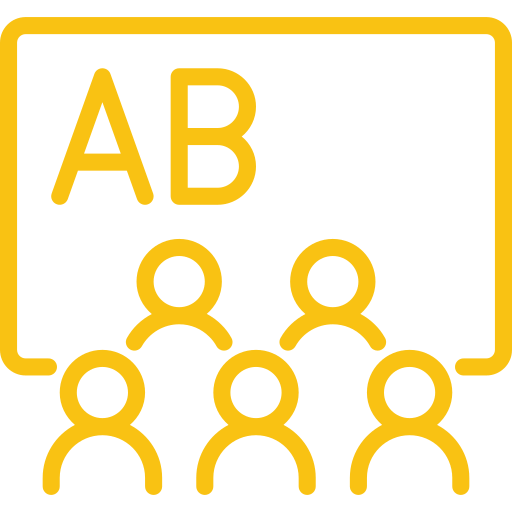Facilitating learner centered teaching, my friends, is no walk in the park. Actually, I guess that depends on the park. Some parks are tougher than others to navigate…
But don’t sweat it! You’re not alone on this daring adventure.
We all know that shifting from traditional teaching methods to a student-centered approach can feel as tricky as finding Waldo in one of those insanely crowded pictures. But here’s the deal…
If you master facilitating learner centered teaching, you’ll become an educational ninja – nimble, adaptable and always ready for action!
And the best part…once you start mastering and utilizing this in your classroom, your job gets easier. Not easy, just easier…
Unraveling the Magic of Learner-Centered Teaching
You know, there’s a certain magic in the definition of learner-centered teaching. It’s like turning education into a choose-your-own-adventure book where students are not just readers but authors too. In this world, teachers become wizards guiding their apprentice learners through an enchanted forest of knowledge.
“Learner-centered teaching is more than a method; it’s about flipping the script and letting students direct their own learning journey.” – Pretty much any experienced educator
Here’s another way to think about it: when’s the last time students left your classroom talking about what they learned? How often do they get excited to tell their parents what they’re doing in class?
The importance of learner-centered teaching in education? Oh boy, where do we start?
Diving Into The Principles And Perks Of Learner-Centered Teaching
If you’re looking for ways to make your classroom feel less like school, implementing strategies for learner-centered teaching might be your best bet. One key principle? Empowering student autonomy. This means giving them the skills they need to navigate learning at their pace.
Another trick up our sleeve is encouraging problem-solving skills. One of the biggest problems facing our students today is the lack of drive, and the ability to persevere when things get tough. When students are allowed to have more control, they also can’t ask others for help as easily. They have to learn to solve some of their own problems.
Benefits? From developing teamwork to enhancing presentation skills – the perks are countless.
Fanning The Flames Of Engagement With Learner Centered Teaching
Intrinsic motivation can spread faster when learners feel valued. However, it is not a simple task to foster such engagement; rather, it requires consistent effort and an environment that allows for meaningful dialogue on academic progress. Promoting such engagement isn’t as easy as waving a wand and watching everyone dive in. No sirree.
We need consistent effort – kindling feedback between teacher-student relationships while also crafting safe spaces for open dialogue on academic progress.
Designing Authentic Learning Experiences: A Whirlwind Tour
The world of learner-centered teaching is an exciting one, folks. Why? Because it’s all about crafting authentic learning experiences that grab students’ attention.
Incorporating Real-World Applications into Learning Activities
Ever wondered how to bring the hustle and bustle of the real world right into your classroom? Well, integrating real-world applications into learning activities is your ticket to making lessons more engaging. It’s like bringing a slice of life right onto the students’ desks.
This could mean inviting guest speakers from various professions or planning virtual field trips that allow learners to explore different careers. It’s not just about seeing cool stuff—it helps them connect their studies with life outside the school walls.
Critical thinking skills in learner-centered teaching get a major boost when we create tasks rooted in reality. Imagine you’re discussing the effects of climate change on ecosystems; why not ask students to brainstorm solutions for potential environmental problems using what they’ve learned?
Promoting critical thinking isn’t some dry academic exercise—it becomes a thrilling challenge when tied to real-world issues. This video from Shelly Wright showcases the power of student-driven learning, where curiosity leads us towards knowledge. (It’s a great video, you need to check it out!)
Uncovering Effective Strategies for Facilitating Learner-Centered Teaching
The power of active learning in learner-centered teaching is like a superhero, ready to swoop in and save the day. But instead of fighting off villains, it’s all about engaging students and making them active participants in their own educational journey.
Boosting Student Engagement through Active Learning
Let’s get real here. An effective way to make lessons stick is by getting your students involved. And no, we’re not talking about calling on that one student who always raises their hand first (you know who you are). We mean implementing strategies that make every student feel part of the conversation.
This could be as simple as group discussions where everyone shares ideas or thoughts – kind of like a mini TED talk but without the fancy lighting and dramatic music.
Integrating Technology for Active Learning
Different types of active learning strategies, such as problem-solving exercises or case studies, can light up those little neurons in our brains better than any fireworks display. These methods encourage learners to apply what they’ve learned – which is definitely more beneficial in today’s world than simple memorization.
Embracing Hands-On Activities for Enhanced Learning
If you thought hands-on activities were only for art class – think again. There’s nothing quite like getting stuck into an activity to help understand concepts better. So why not let science experiments become regular guests at your classroom parties? Trust us; abstract theories will suddenly start making sense when brought out from textbooks into reality.
Encouraging Reflection for Deeper Understanding
Last but certainly not least: reflection time. After each session filled with energetic discussion or fun-filled activity (or both), give your students some time out for self-reflection – it’s kind of like hitting ‘save’ on new information before switching off your computer.
Think of active learning as the superhero in your learner-centered teaching strategy, swooping in to make students the stars of their educational journey. Spice up lessons with group discussions and hands-on activities that bring textbook theories to life. Use technology for problem-solving exercises and encourage reflection after each session – it’s like hitting ‘save’ on new knowledge.
So, You’re Building a Supportive Learning Community?
We all know that cultivating a classroom environment is like trying to herd cats – each one with its own personality and way of doing things. But fear not. We’ve got some top tips for you.
The first step in your journey? Building positive relationships with learners. It’s like being the cool aunt or uncle who always has candy in their pockets – it gets kids excited about learning.
Promoting inclusivity (as you can read in this article from Teachers College), too, can be as rewarding as finding an extra fry at the bottom of your takeout bag (I’m a little food motivated, I admit it). Inclusivity isn’t only about recognizing disparities; it’s also about honoring them. After all, wouldn’t life be boring if we were all the same?
A Whole New World: Encouraging Peer Collaboration
If teaching students to work together was easy, we’d probably have less teacher burnout. However, encouraging peer collaboration is key to creating a supportive community.
Surely you remember those dreaded group projects from school where everyone argued over who did what? Well think again. Because when done right (and trust us on this), collaborative activities are gold mines for skill development.
All For One: Addressing Individual Needs Within The Community
Last but not least – addressing individual needs within the community. It’s kind of like baking cookies; some might need more time in the oven than others (mental note, stop writing articles when you’re hungry).
No worries though because there are resources out there such as Understood.org, a site dedicated specifically towards supporting learners who think differently.
This way every student feels seen and supported – sort of like how everyone feels loved when they get their favorite cookie straight from the oven (a little under-baked in my case).
Pretty sweet deal if you ask me.
Integrating Technology into Learner-Centered Teaching
The classroom is a dynamic environment, and technology serves as a valuable tool for educators. From educational apps to multimedia resources and digital tools, there is a wide range of options available to enhance the learning experience.
Gone are the days when “tech in class” simply meant playing Oregon Trail on an outdated computer. Today, we have innovative apps that make learning both engaging and enjoyable. And with artificial intelligence, it seems like more are showing up every day.
Nellie Mae Ed Fund Transformation is a prime example of how technology can revolutionize education through learner-centered approaches.
Educational Apps: A Smorgasbord of Learning Experiences
Educational apps are like the little umbrellas you find in tropical drinks – they add a touch of fun to the mix. These apps cater to different subjects and learning styles, while also offering customization options for teachers. One of the greatest benefits is the ability to provide instant feedback to students, enhancing their learning journey.
Digital Tools & Multimedia Resources: Your Instructional Swiss Army Knife
Multimedia resources are not just cool gadgets; they serve as gateways to knowledge. Imagine interactive videos or animations that offer learners a variety of ways to absorb information. These resources provide a rich and immersive learning experience.
Let’s not forget about digital tools – from virtual labs that provide hands-on experience to online collaboration platforms that encourage peer interaction. Used properly, these tools empower both teachers and students alike.
Just remember that amazing tools are only part of the process; they won’t replace quality teaching. They just enhance it and allow you to do things that weren’t possible before.
Digital Literacy: Not Just Geek Speak
Nurturing digital literacy among students goes beyond teaching them how to navigate technology. It also involves instilling an understanding of basic principles of privacy and security. By equipping our future citizens with these skills, we ensure they do not inadvertently share sensitive information online.
Classroom tech isn’t just a cool add-on anymore—it’s transforming how we learn. Educational apps are making learning more exciting and interactive, while also providing immediate feedback. Think of multimedia resources as knowledge portals—they offer deep-dive experiences. And digital tools? They’re like secret weapons for both teachers and students. But it doesn’t stop at mastering the tech—we’ve got to teach online safety too.
Reflecting & Evaluating: The Classroom’s Mirror
When it comes to instruction, we can become so concentrated on our pupils that we neglect ourselves. But hold up. Our own practices need some TLC too.
We’ve got the lowdown on using data and evidence for decisions about instruction methods and seeking feedback from learners and colleagues. So, let’s dive into this educational rabbit hole.
1. Be a Data Detective in Your Classroom
The dreaded 4 letter word in education, data.
Data is your new best friend – seriously. It might not bring you coffee or laugh at your jokes, but it’ll give you insights that can transform your classroom dynamics. (I know, I hate to hear the word also, but it’s a necessary evil these days).
To start being the Sherlock Holmes of education, make sure to use AI-based tools to analyze student performance data. They’ll help identify what works and what doesn’t faster than you can say “Elementary.” Remember, work smarter, not harder.
The trick here is simple – look at the numbers then adjust accordingly. If group work equals confusion but individual tasks lead to A+’s? Time for a change.
2. Students Know Best (Sometimes)
No one knows better how they learn than the learners themselves. And guess what? They usually have opinions…lots of them.
This isn’t rocket science folks – ask them directly through anonymous surveys or open discussions about their learning experiences in class.
- Create an environment where everyone feels comfortable sharing thoughts;
- Acknowledge each opinion as valid even if it contradicts yours
3. Get by with a Little Help from Colleagues
We teachers tend to be solitary creatures during school hours, locked away in our classrooms. But remember: there’s strength in numbers. Invite fellow educators into your classroom.
Their fresh eyes may spot brilliant techniques you’re already rocking, or suggest something completely out-of-the-box worth trying out. You see, evaluating one’s own practices doesn’t mean going solo – team effort counts too.
Think of your classroom as a crime scene and you’re the detective. Data is your best ally, revealing insights about what teaching methods are working or not. Your students aren’t just pupils – they’re gold mines of feedback if you dare to dig in. And don’t forget your fellow educators. Their fresh perspectives can add spice to your tried-and-true practices.
Unleashing the Power of Learner Autonomy
The mission, should you choose to accept it, is fostering learner autonomy. The endgame? A classroom full of independent thinkers who don’t just memorize facts but chew on them like a pack of intellectual termites. With enough conditioning, these learners see challenges and setbacks as opportunities for a mental workout.
Self-Reflection: Not Just for Mirrors Anymore
If we want our students to be self-guided missiles of knowledge acquisition, we’ve got to get them reflecting on their learning process. Think about journaling or goal setting – anything that requires looking inward with an academic flashlight.
Can technology help us in our endeavors to make students self-directed learners? Indeed. Artificial intelligence (AI) has infiltrated classrooms (and everything else it seems) so quickly it seems like it’s been here for years. Teachers can use AI tools to spit out personalized feedback based on student performance, turning your classroom into Self-Reflection Central.
Growth Mindset: It’s Like Fertilizer For Your Brain
Besides encouraging introspection worthy of Socrates, another trick up our educational sleeve is nurturing growth mindsets among learners. This concept embraces resilience and perseverance through difficulties because abilities are not fixed traits; they’re more malleable than Play-Doh at room temperature.
Praise effort instead of inherent talent or intelligence—think ‘Einstein Awards’ over ‘Easy Street.’ Constructive criticism aimed at improvement trumps focusing solely on outcomes—less “Why did you fail?” more “How will you win next time?” Take a cue from the youth sports world and build up your kids.
To help your learners become autonomous go-getters with growth mindsets set to maximum capacity, Khan Academy’s ‘You Can Learn Anything’ program uses adaptive technology offering customized learning paths tailored towards individual needs – making it yet another ace in the hole for educators seeking ways to foster learner autonomy within their classrooms.
Want to grow a classroom full of brainy termites? Kick things off by igniting student independence. Let them digest facts, not just memorize. Promote self-reflection using tools that give tailored feedback. Foster growth mindsets – resilience and perseverance are key. Lastly, make good use of adaptive tech like Khan Academy’s.
Cultivating Collaboration with Parents & Stakeholders: A Classroom Comedy
So, you want to engage parents and stakeholders in the classroom? Let’s be honest. Most parents simply don’t have time for that these days. But fear not. We’ve got some handy tips that might just save your sanity.
“The key is finding ways to involve everyone without turning your classroom into a three-ring circus.” – An Anonymous (and probably exhausted) Teacher
All Hail The Mighty Stakeholder.
Beyond the parental units, getting community stakeholders involved fosters accountability and responsibility. It’s important to get these important players access to curriculum updates or school events – talk about cultivating collaboration effectively.
Or better yet, get them in the classroom presenting and answering questions to your students.
Open Communication Channels: Less Secret Agent, More Town Crier
You know what they say – communication is key. Don’t be afraid to send messages often, both positive and negative.
Remember folks; every conversation brings us one step closer towards creating an educational utopia…or at least a less chaotic parent-teacher conference night.
Unlocking the Magic of Learner-Centered Teaching
Sometimes, being an educator feels like you’re juggling chainsaws while riding a unicycle. On a tightrope. Blindfolded. But when it comes to implementing learner-centered teaching, we’ve got your back.
Here’s how continuous professional development (CPD) can be your secret weapon in nurturing effective implementation.
1. Spotting Your Growth Opportunities
Seeking growth opportunities can be like searching for the mythical Holy Grail. Well, that’s what hunting down relevant growth opportunities can feel like. These could be workshops or online courses tailored towards using AI tools in education.
Midwest Teachers Institute is one such place where this magic happens – we offer numerous programs designed just for teachers who are keen to sprinkle some AI fairy dust (or other educational tools) into their curriculum, and create learner-centered classrooms. Written by real classroom teachers.
2. Staying In The Loop With Research Trends
If keeping up-to-date with current research trends was an Olympic sport, educators would definitely bring home the gold. Whether it’s subscribing to ed-tech journals or stalking researchers on social media (in the most professional way possible), staying informed about recent developments is crucial for effective implementation of AI tools.
The Journal of Computer Assisted Learning, for example, often drops knowledge bombs about innovative uses of AI in education which could inspire new tricks up your sleeve. And there’s tons of other opportunities on Tik Tok and YouTube.
3. Nurturing Professional Development For Effective Implementation
To make sure you’re making strides in CPD, remember these three things: keep exploring learning opportunities, stay updated with the latest research trends, and don’t forget us when you also want some graduate credit at the same time.
This might sound daunting, but trust us – it’s as easy as ABC once you get started.
Conclusion
Facilitating learner-centered teaching is a journey, not just a destination.
You’ve explored the principles and benefits of learner-centered teaching, understanding how it can revolutionize classrooms.
We have discussed the importance of creating authentic learning experiences, emphasizing the value of real-world applications in instruction.
We’ve also delved into the role of active learning, encouraging student participation and hands-on activities for deeper comprehension.
Furthermore, we have emphasized the necessity of building supportive communities within our classes, recognizing the importance of inclusivity.
Tech integration is another crucial aspect of learner-centered teaching. It goes beyond using educational apps; it involves promoting digital literacy among students.
Evaluation and reflection on your own practices are not optional but crucial for improvement. Always seek feedback to enhance your teaching.
Fostering learner autonomy is key to promoting independent thinking, while collaboration with parents enhances overall success in education journeys.
Lastly, continuous professional development is essential to ensure the effective implementation of learner-centered teaching. Keep growing as an educator!
If you are looking to learn more, consider taking one of our graduate classes here at MTI. We offer the most affordable graduate classes on the market, developed by real teachers.
Unlike other companies, we have zero hidden costs, and we provide the syllabus before you sign up. Some surprises are good, but they shouldn’t involve your money or time.
And if you’re interested in teaching with us, feel free to reach out via any of our social media links, or send an email to [email protected] for more details.




















